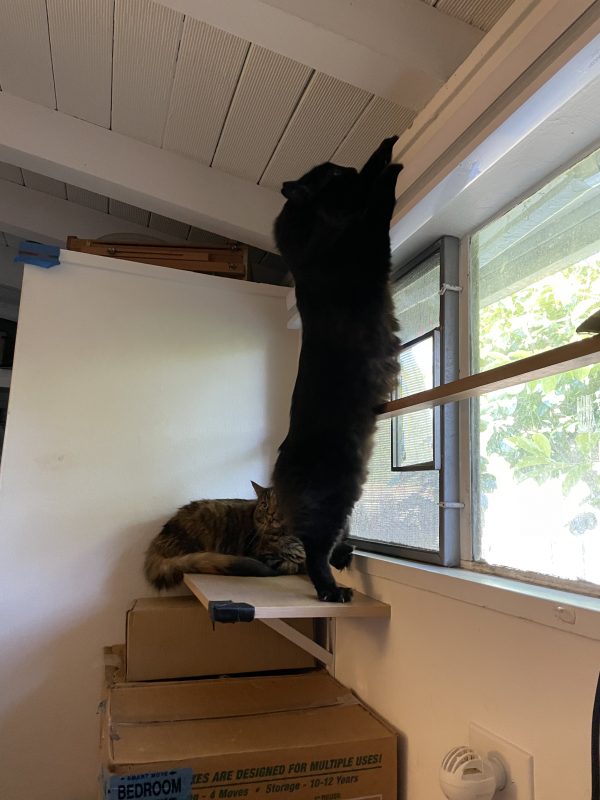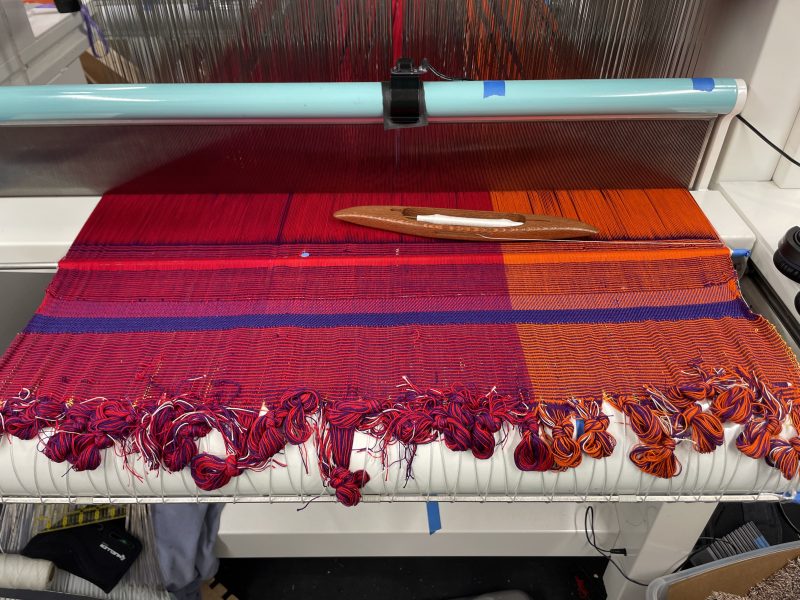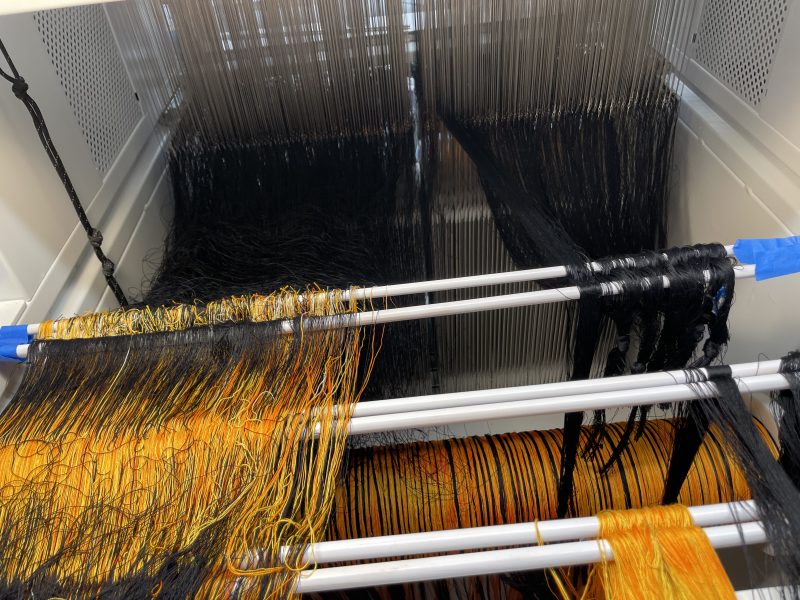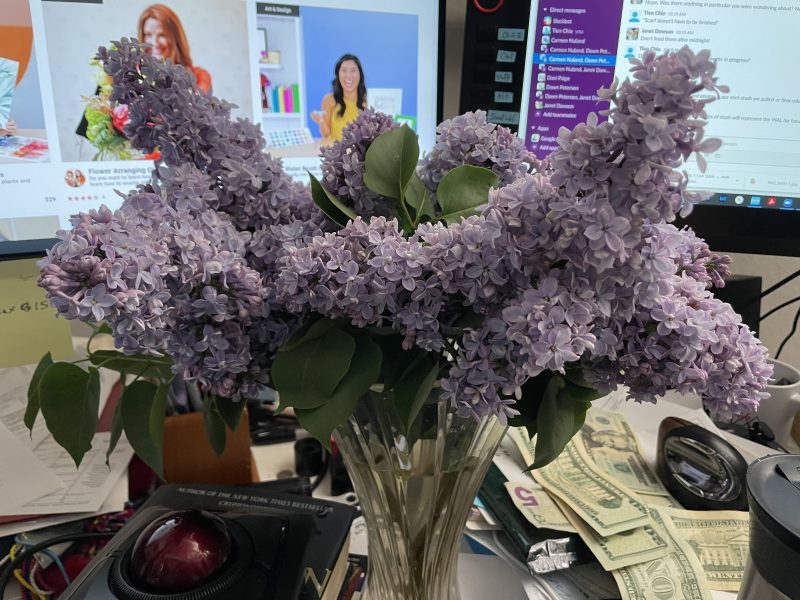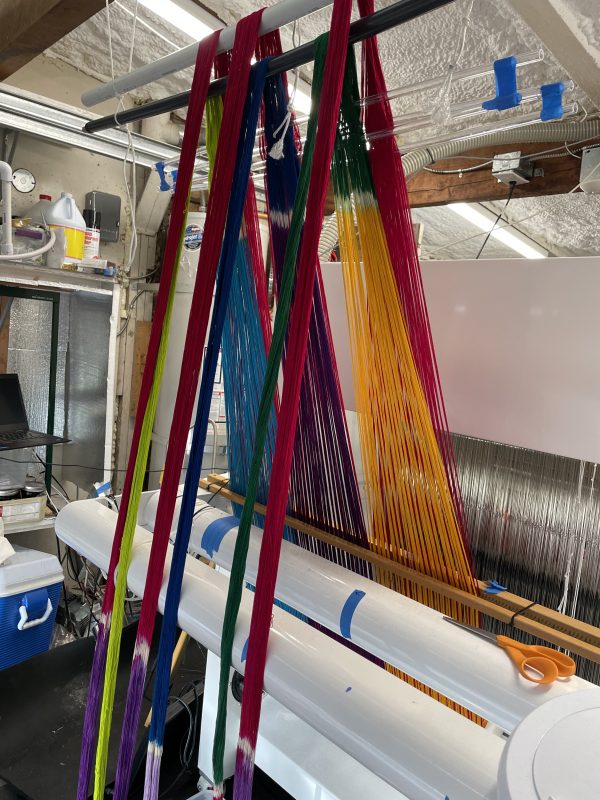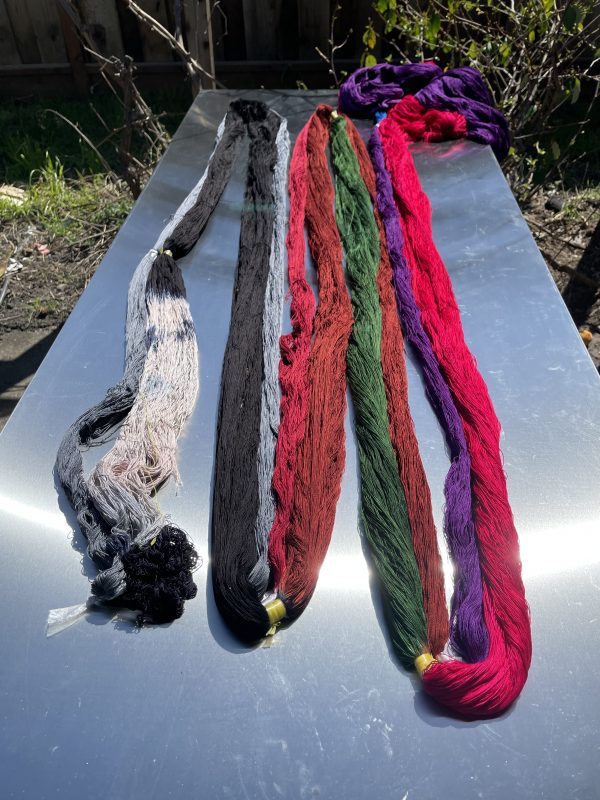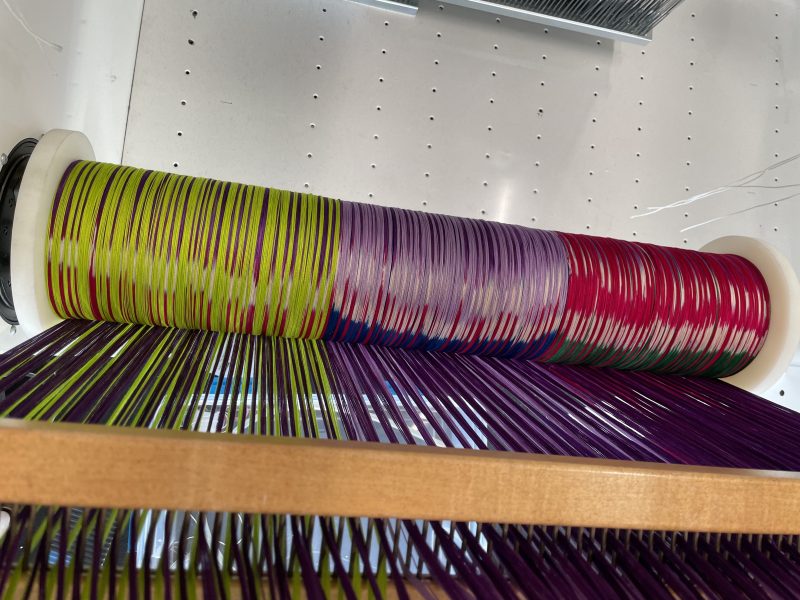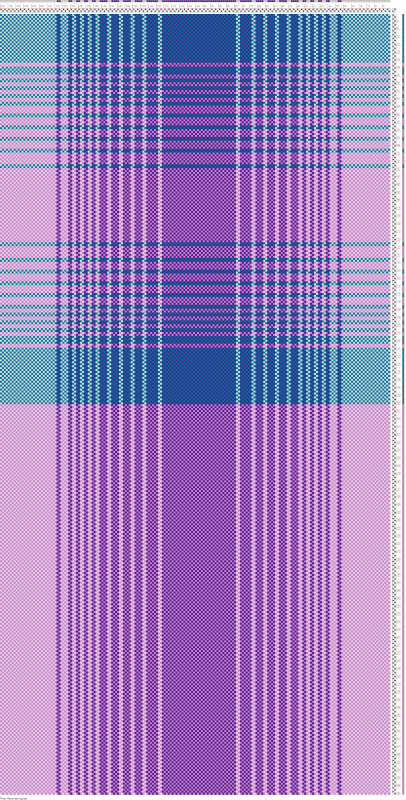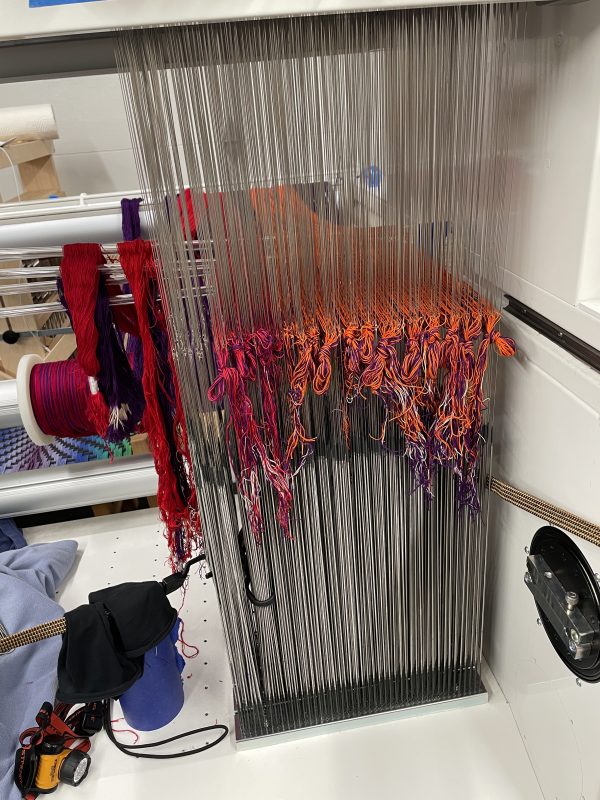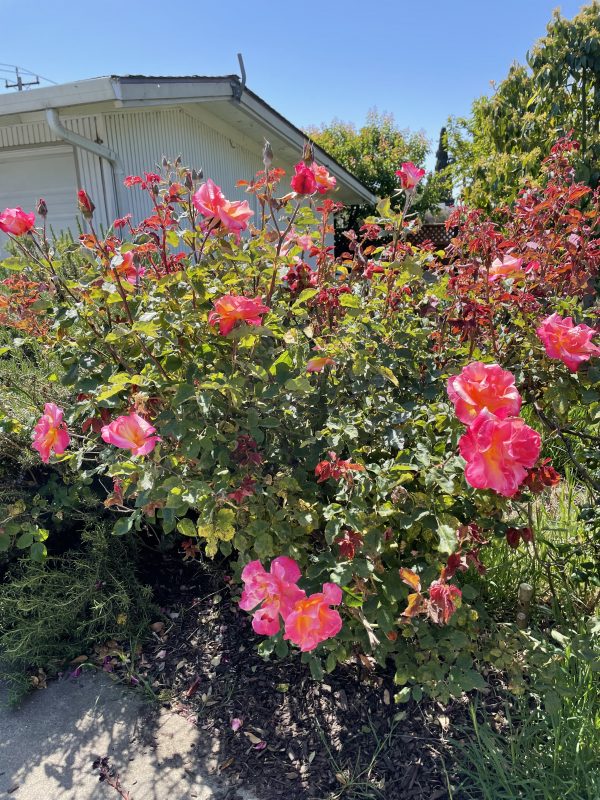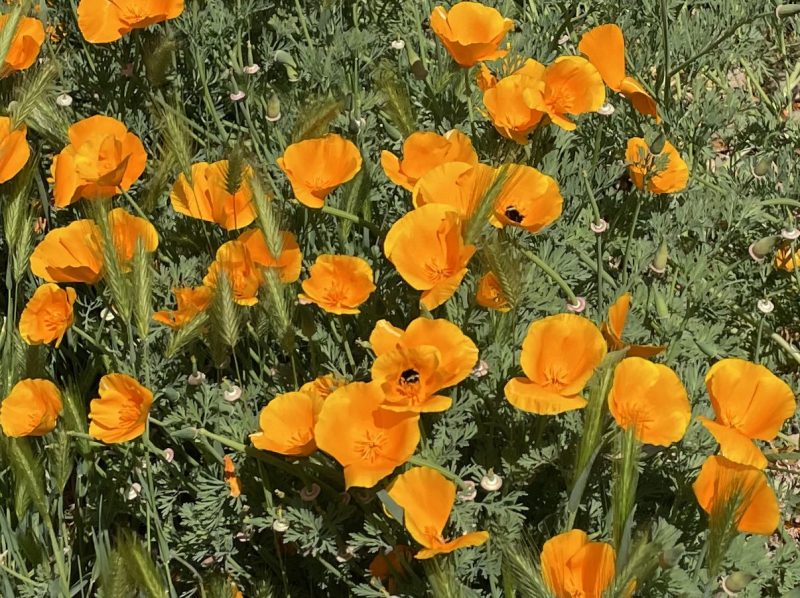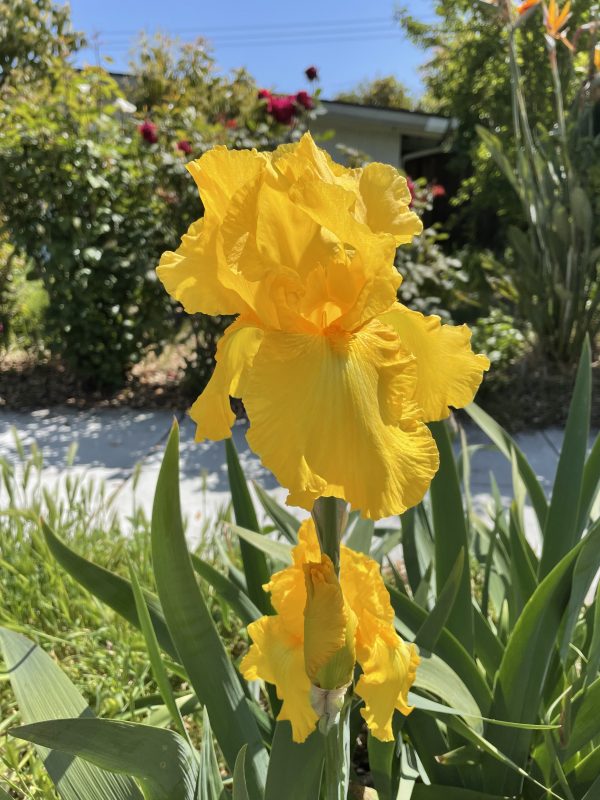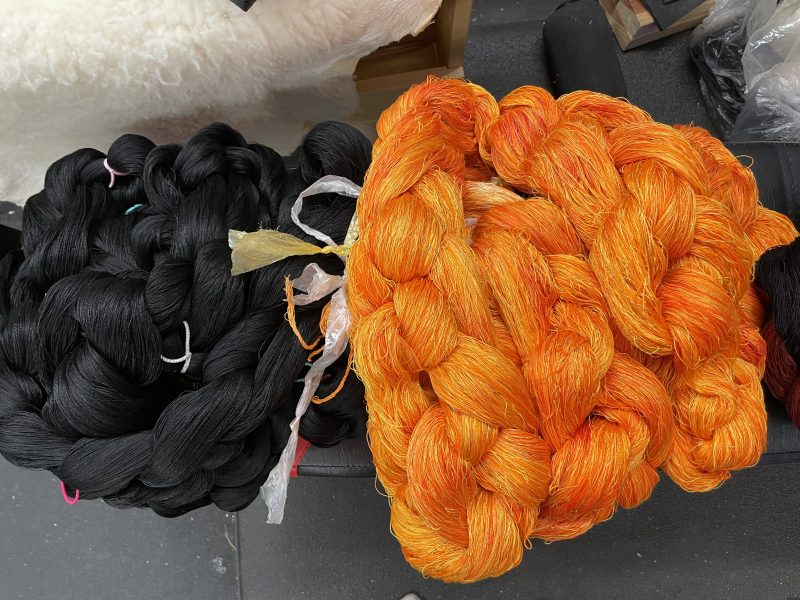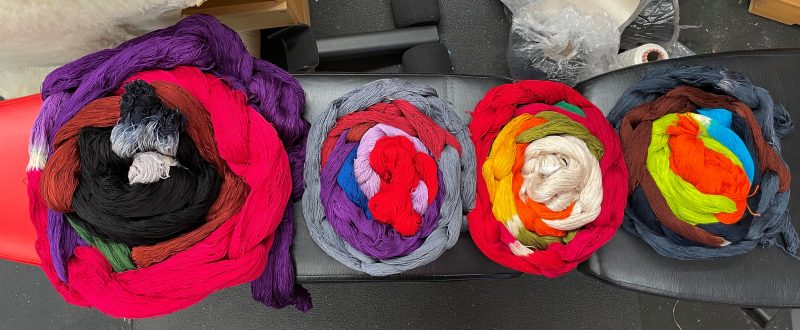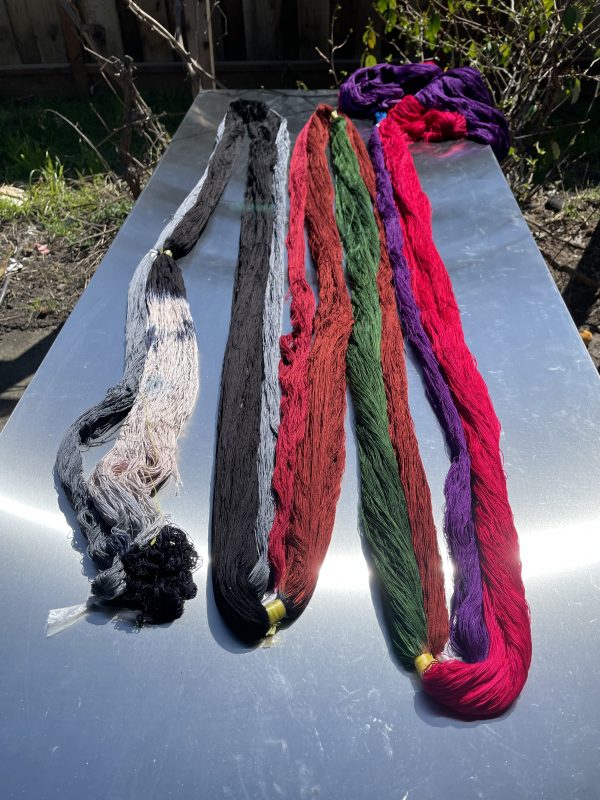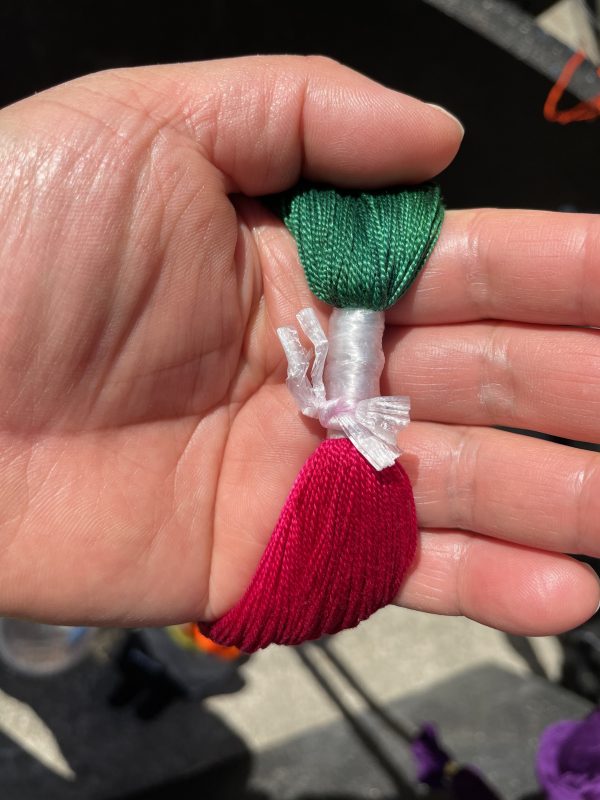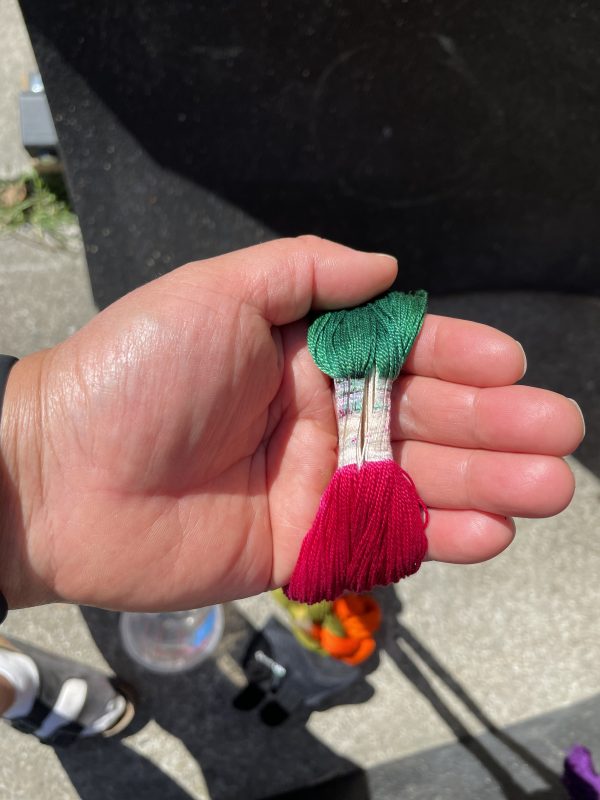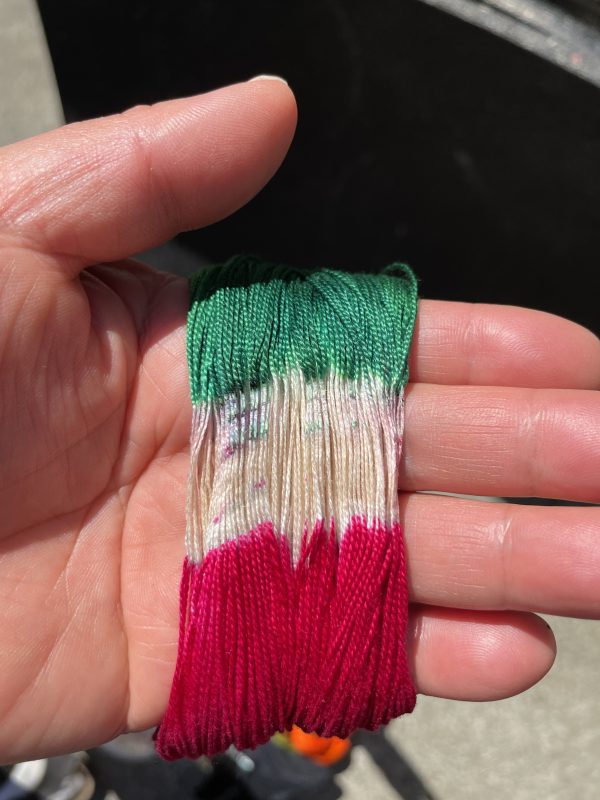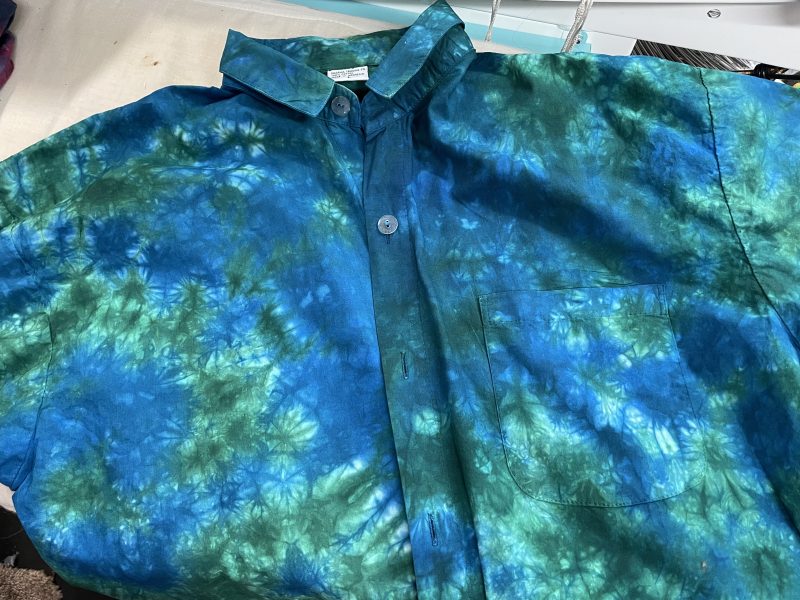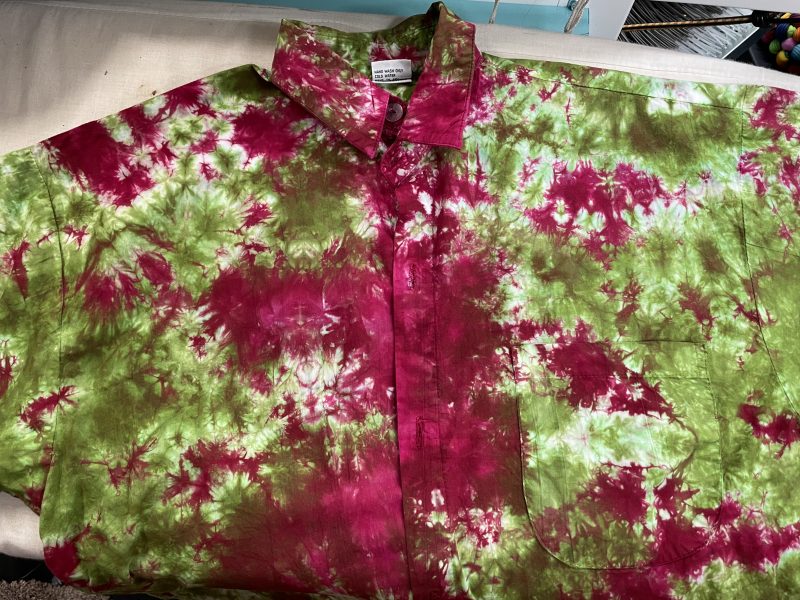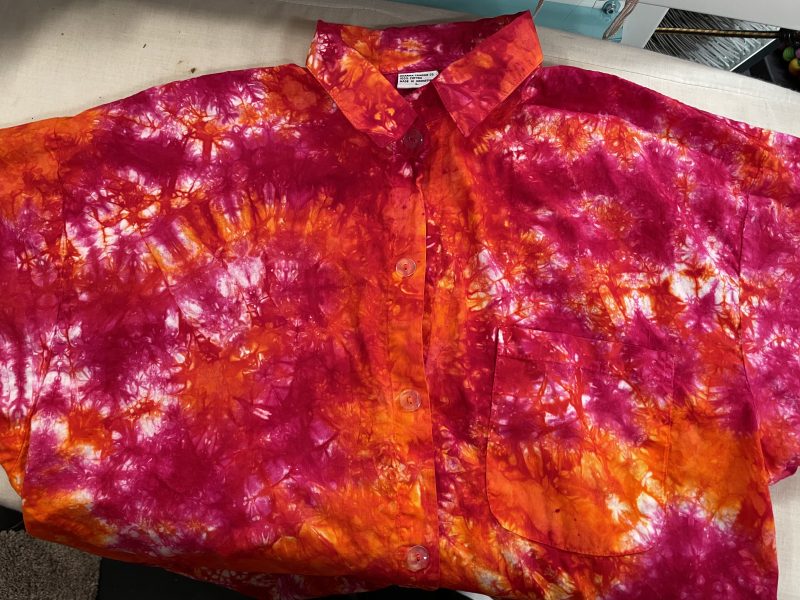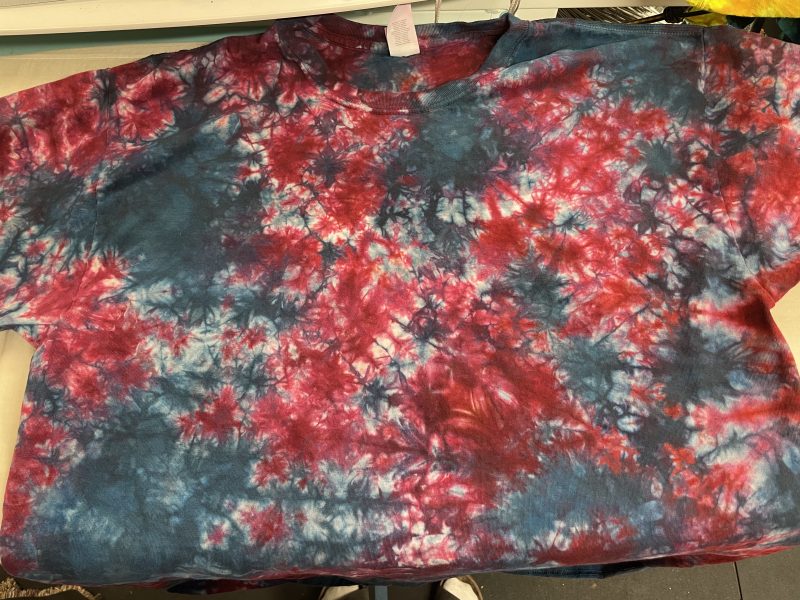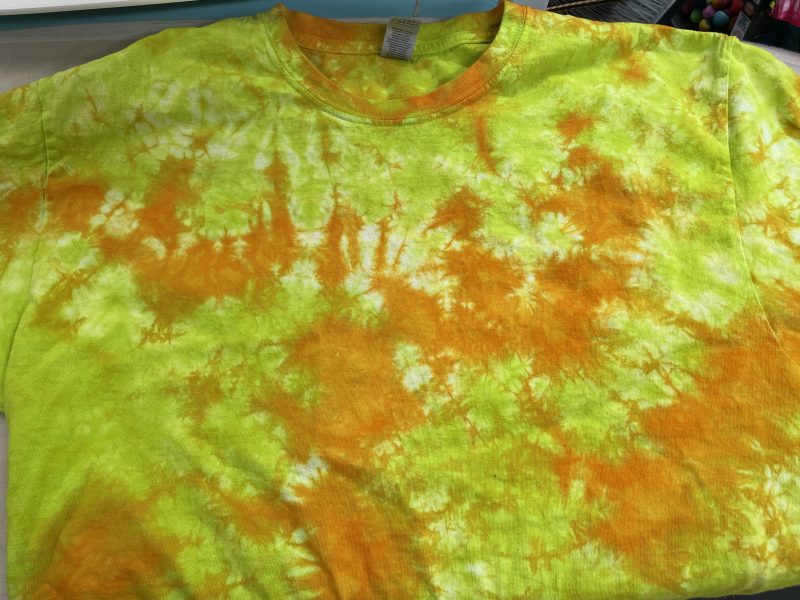Well! It’s been a packed week and a half. Mostly working on the business, though I did get some weaving in. I am now 70.54% done tying on the “Fire” warp on Maryam, according to my calculations (hey, that .04% is IMPORTANT! Gotta keep up the troops’ morale!):
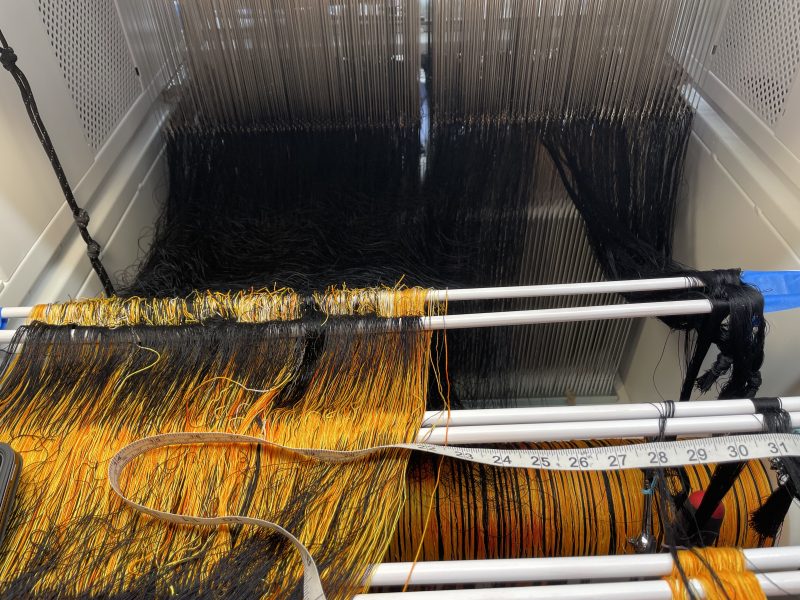
I have also made important progress on the gradient warp. I figured out how to align a complex color gradient with a complex draft in Fiberworks and translate the resulting color/draft combination to the jacquard loom. It’s not a simple problem because the color pattern on the jacquard loom isn’t actually color but a structural pattern, and isn’t constructed at all in the jacquard design software the way it is in Fiberworks (shaft loom weaving software). In fact, on my to-do list for today is recording a video walkthrough of the process so I don’t forget how to do it. I will likely publish it on YouTube and in the Jacquard Weaving group on Facebook so that the two other people in the world who might be interested can access it.
Anyway, the wheels go round and round, and the end result is this:
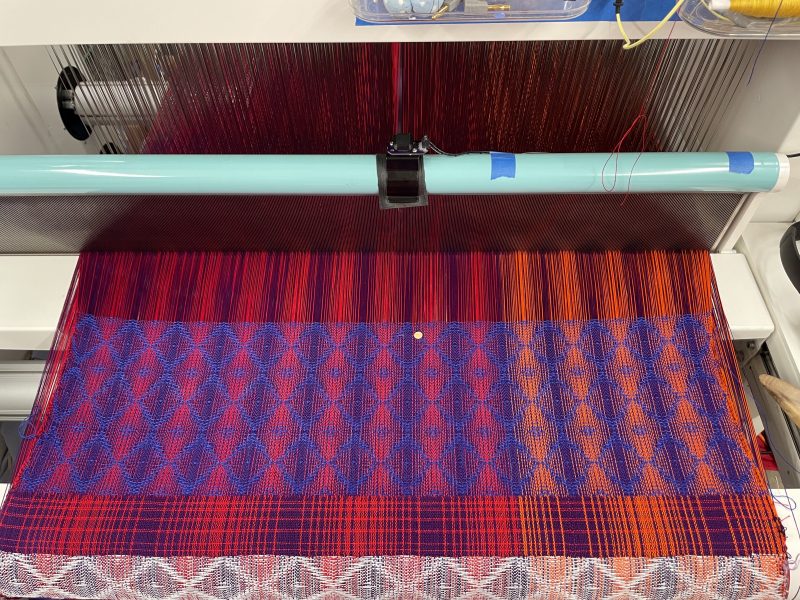
The photo really doesn’t do justice to the gradient, though. Let’s zoom in:
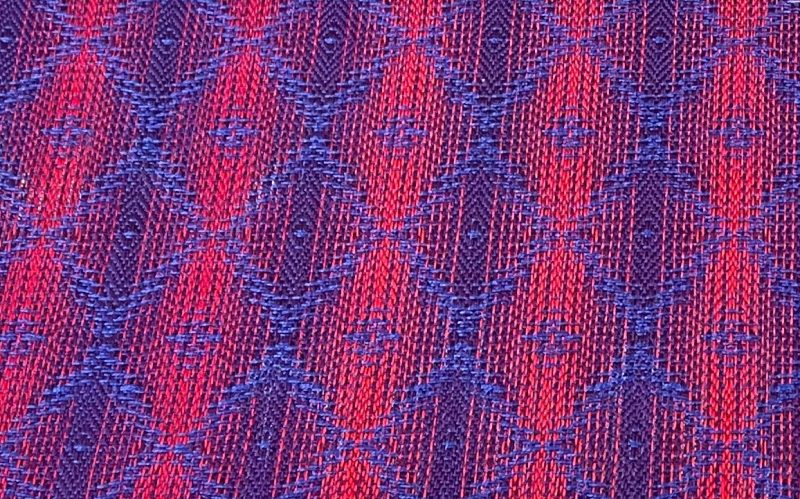
Closer up, you can see that the gradient gives an almost three-dimensional feel to the pattern, the illusion that it’s curved outward in the center. Nifty, eh?
Anyway, that’s just a doodle, experimenting to see how the method works. Now that I’ve figured out how to set up drafts and gradients to align with each other, I can get on with the business of designing the actual samples. To be honest, most of the samples are going to be much simpler than this; the class is going to be four or six weeks (I’m giving two options) and the first four weeks will probably be devoted to plain weave and twill. The last two weeks are going to be packed with information about cool drafts like this one.
Before I weave the samples, however, I have to design the class. On deck for this week is writing a detailed class outline, both for the free weave-along and for the more in-depth, paid class. I’m really looking forward to it! Once I know exactly what I’m teaching, I can design the samples and get to weaving.
Meanwhile, there’s an even more important battle front at home. Jamie was complaining that there was no chocolate in the house. That, of course, is an intolerable situation, so I fixed it:
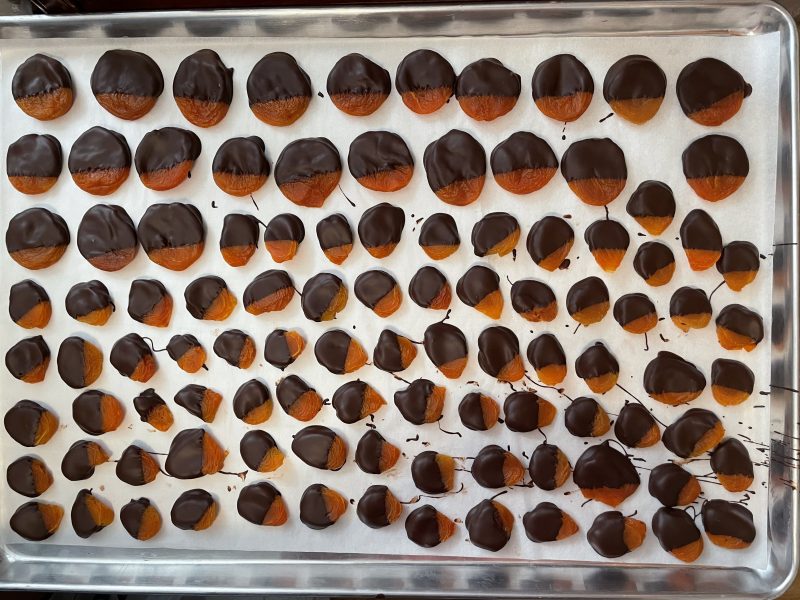
The apricots at the top are extra large slab apricots from the farmer’s market. The woman who sells them there says she only had 19 cases this year and her partner wanted to save them for big customers like Harry & David, but she said, Pfft! I’m giving them to my customers at the farmer’s market, the ones I see regularly and who actually care about me and my farm. The power of relationships. (The smaller apricots are her regular kind – better for snacking, but I thought it would be nice to have some big fancy ones to give away.)
And then I got some almonds and some dried Bing cherries from her as well:
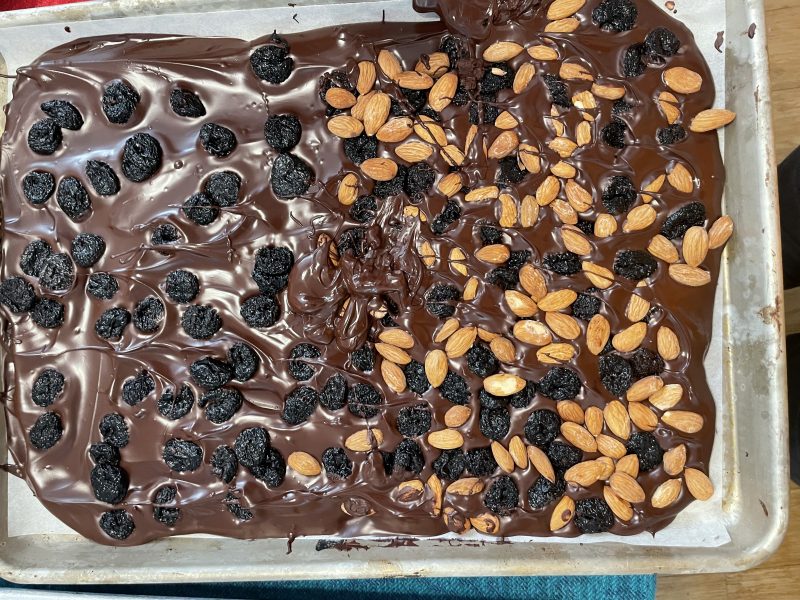
I did some plain chocolate bars and some almond bars, too, so Jamie should be kept in chocolate for quite some time!
Finally, since the Fire warp looks like it will be weavable sometime in the reasonably near future, it’s time to think about what to do with it. As I mentioned a few blog posts ago, I’ve gotten fascinated by folded/origami books, so I’ve been investigating different book structures. I’m planning to experiment with several different book structures, including dragon books, flag books, and some fancier accordion structures – but the one that most intrigues me at the moment is the carousel/star configuration, so I’m going to make a carousel book prototype today. I’m also going to experiment with some methods of stiffening cloth into something suitable for book making – two methods were suggested to me, stiffening with konnyaku paste and backing with Japenese paper, and I’m planning on doing some modest experiments, if I can find appropriately sized scraps of handwoven cloth in the sample bin.
Here are some of the paper samples I plan to play with:
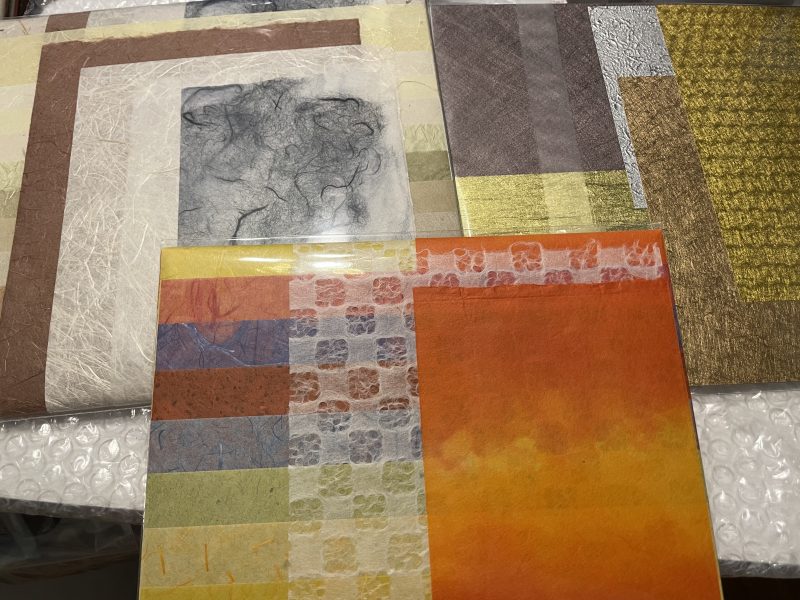
What fun! I’m glad to be able to make time for creative experiments again.
And, of course, it would be unthinkable to leave out the rulers of the household. Fritz and Tigress have been utterly fascinated by the persimmon tree outside the bedroom, where some birds have built a nest and thoughtfully populated it with constantly peeping cat toys. Sadly, they can’t get out to play with the cat toys (much to everyone’s relief), so they just have to settle for watching. But Fritz is very excited, and would like you to know that Tall Cat is Tall.
